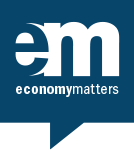
Generally speaking, the economy of the Southeast from mid-May through June continued in a holding pattern amid ongoing uncertainty, according to the new Beige Book report from the Federal Reserve Bank of Atlanta.
The Federal Reserve has a dual mandate established by Congress to foster price stability and maximum employment. The situation on the price stability side of the mandate remained complicated, primarily because of uncertainty surrounding tariff policy.
Overall, prices rose at a moderate pace, as many businesses expressed inflationary concerns surrounding the direct and indirect effects of trade policy and related uncertainty.

Contacts said they are dealing with the uncertainty in several ways. Firms exposed to tariffs continued to describe various approaches to pass through higher costs, such as sharing tariff-related increases with suppliers and customers. Some businesses have raised prices ahead of imposed tariffs. Others said they were awaiting clarity on trade policy before hiking prices, which puts pressure on profit margins but minimizes price volatility.
Still other contacts noted they were delaying price adjustments as they worked through inventories accumulated before tariffs were imposed. Contacts also continued to reconfigure supply chains amid trade turmoil but said that was difficult because of uncertainty concerning the final tariff levels for different countries.
On the employment front, labor markets remained largely unchanged from the previous six weeks. Most firms kept headcounts stable and expect to do so for the rest of the year, while some plan to leave openings unfilled as they wait to see how the economy develops. Contacts continued to describe a reluctance to hire given economic uncertainty and softening demand. In one industry, trucking, some firms cut staffing as demand slowed.
In other economic sectors:
- Consumer spending declined slightly, as retailers said shoppers became more value conscious. Many merchants who were still selling off pre-tariff inventories expect demand to erode if, or when, they impose tariff-related price increases.
- Commercial real estate activity broadly declined a bit, but the picture differed by sector. Office rents and vacancies were stable, for example, but industrial real estate contacts said demand slowed appreciably. Demand for retail space also weakened.
- Transportation activity increased, even as the outlook remained clouded by geopolitics, trade policy, and the possibility of an economic slowdown.
- Manufacturing contacts delayed plans to reconfigure supply chains as they await clarity on trade policy. Some food producers noted concerns about the costs and subsequent impact on prices of complying with new Food and Drug Administration regulations on food coloring and additives.
- In banking, overall loan growth was flat as business investment stalled amid economic uncertainty and banks tightened standards for commercial and consumer lending.
- Renewable energy contacts noted heightened uncertainty surrounding government incentives that slowed investment and caused projects to be delayed or cancelled.
The Beige Book is a Federal Reserve System publication about current economic conditions across the 12 Federal Reserve districts. The Fed System and regional reserve banks publish the Beige Book eight times a year, before each meeting of the Federal Open Market Committee. The reports from each District characterize regional economic conditions based on a variety of mostly qualitative information, gathered directly from District sources, including interviews and online questionnaires completed by businesses, community organizations, economists, market experts, and other sources. The Committee next meets July 29 and 30.




